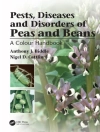This book provides the information on the application of nanotechnology in cleaning wastewater and the impact of microbial ecosystem to solve environmental problems has been critically reviewed in the chapters. It also gives detailed reviews about the conversion of wastewater nutrients into a biofertilizer using microalgae, as well as the applications of Biochar for heavy metal remediation from water. Most importantly, this book contains critical review on microbial fuel cells and highlights the emerging risks of bioplastics on the aquatic ecosystem.
Table of Content
Chapter 1. Trickling of itinerant nanoparticles in wastewater effluents.- Chapter 2. Microbial ecosystem and its impact on solving the environmental problems: A molecular Approach.- Chapter 3. Microalgae cultivation in wastewater to recycle nutrients as biofertilizer.- Chapter 4. Biochar: A growing sanguinity as a combinatorial tool for remediation of heavy metals from wastewaters and solid waste management.- Chapter 5. Microplastics: An Emerging Threat to the Aquatic Ecosystem.- Chapter 6. Impact of Sustainable Energy Resources on Healthy Environment.- Chapter 7. Eco-Friendly Synthesis of Biopolymer Nanocomposites And Its Application As A Potent Marine Antifouling Agent.- Chapter 8. Environmental Metabolomics: with the perspective of marine toxicology assessment.- Chapter 9. Epiphytism in seaweed farming: Causes, status and implications.- Chapter 10. Microbial fuel cell based process for waste water treatment and power generation.
About the author
Dr. Gothandam
K. M. is Professor in Department of Biotechnology, School of Bio Sciences and Technology, Vellore Institute of Technology, Vellore. His research interest includes Plant Molecular Biology, Plant and Microbial Metabolites, cancer biology, Environmental Biotechnology etc. He has published many scientific research and review articles in international peer-reviewed journals and also refereed many journals of high impact.
Dr. Shivendu Ranjan is scientist at the Chaperon Biotech, SIDBI Centre, Indian Institute of Technology, Kanpur, India. He is also serving as a senior research associate, adjunct, at the Faculty of Engineering and Built Environment, University of Johannesburg, South Africa. His research interests include nanotechnology, nanomedicine, science policy and diplomacy. He is associate editor of Environmental Chemistry Letters and editorial board member of Biotechnology and Biotechnological Equipment. He has received 20 awards and honors.
Dr. Nandita Dasgupta has vast working experience in nanoscience and is working as Assistant Professor at Department of Biotechnology, Institute of Engineering and Technology, Lucknow, India. She has worked on Mesenchymal stem cell derived exosomes for the treatment of uveitis. She has successfully engineered micro-vehicles for model drug molecules. Her areas of interest include nanomaterial fabrication and its applications in medicine, food, environment, agriculture and biomedical.She is the associate editor of Environmental Chemistry Letters. She has received several awards and recognitions from different national and international organizations.
Dr. Eric Lichtfouse is an environmental chemist working at the University of Aix-Marseille, France. He has invented carbon-13 dating. He is teaching scientific writing and communication, and has published the book Scientific Writing for Impact Factors. He is founder and Chief Editor of scientific journals and series in environmental chemistry and agriculture. He got the Analytical Chemistry Prize from the French Chemical Society, the Grand Prize of the Universities of Nancy and Metz, and a Journal Citation Award by the Essential Indicators.












